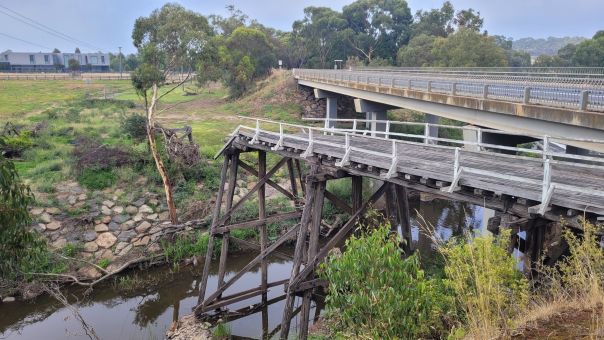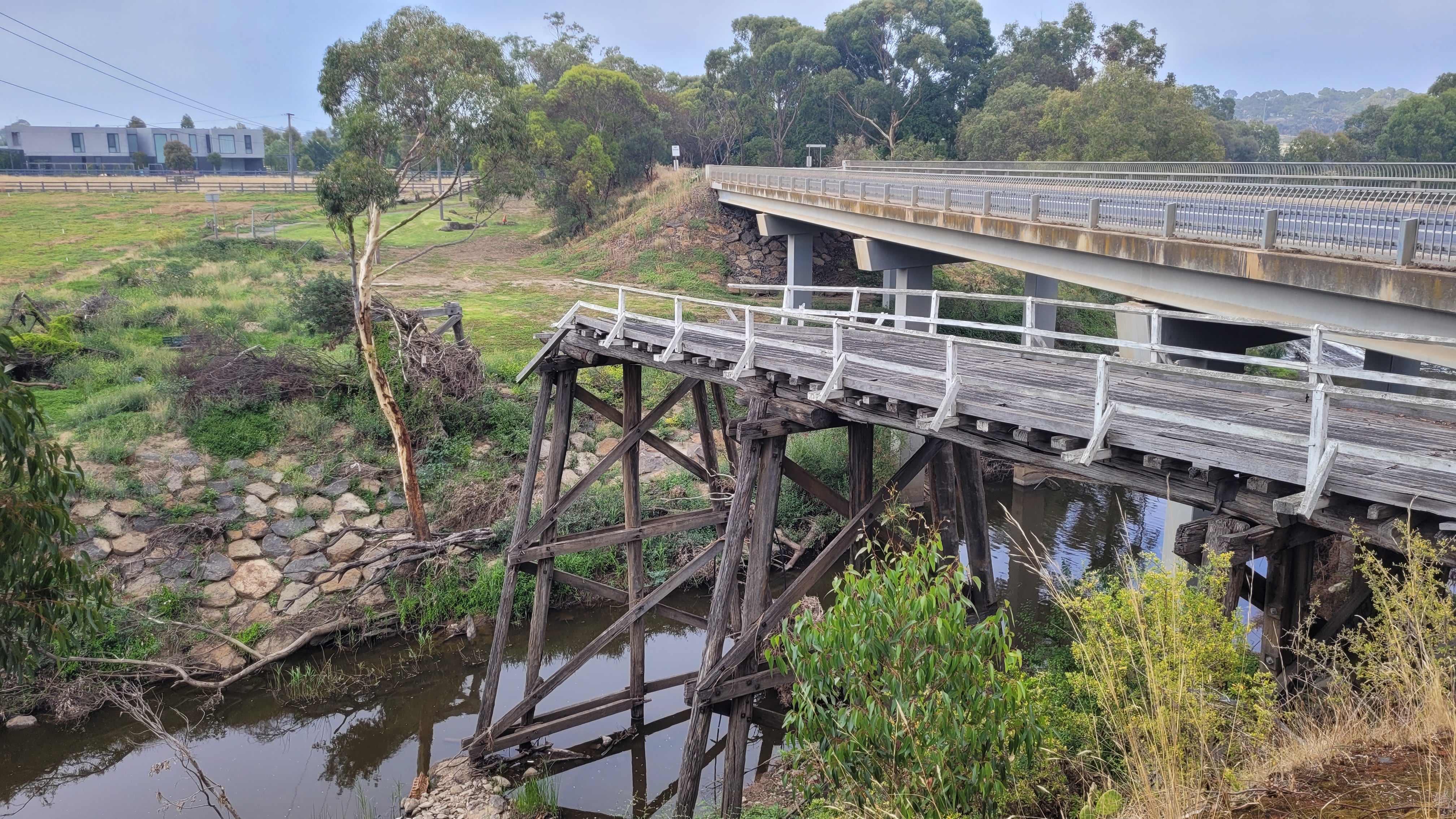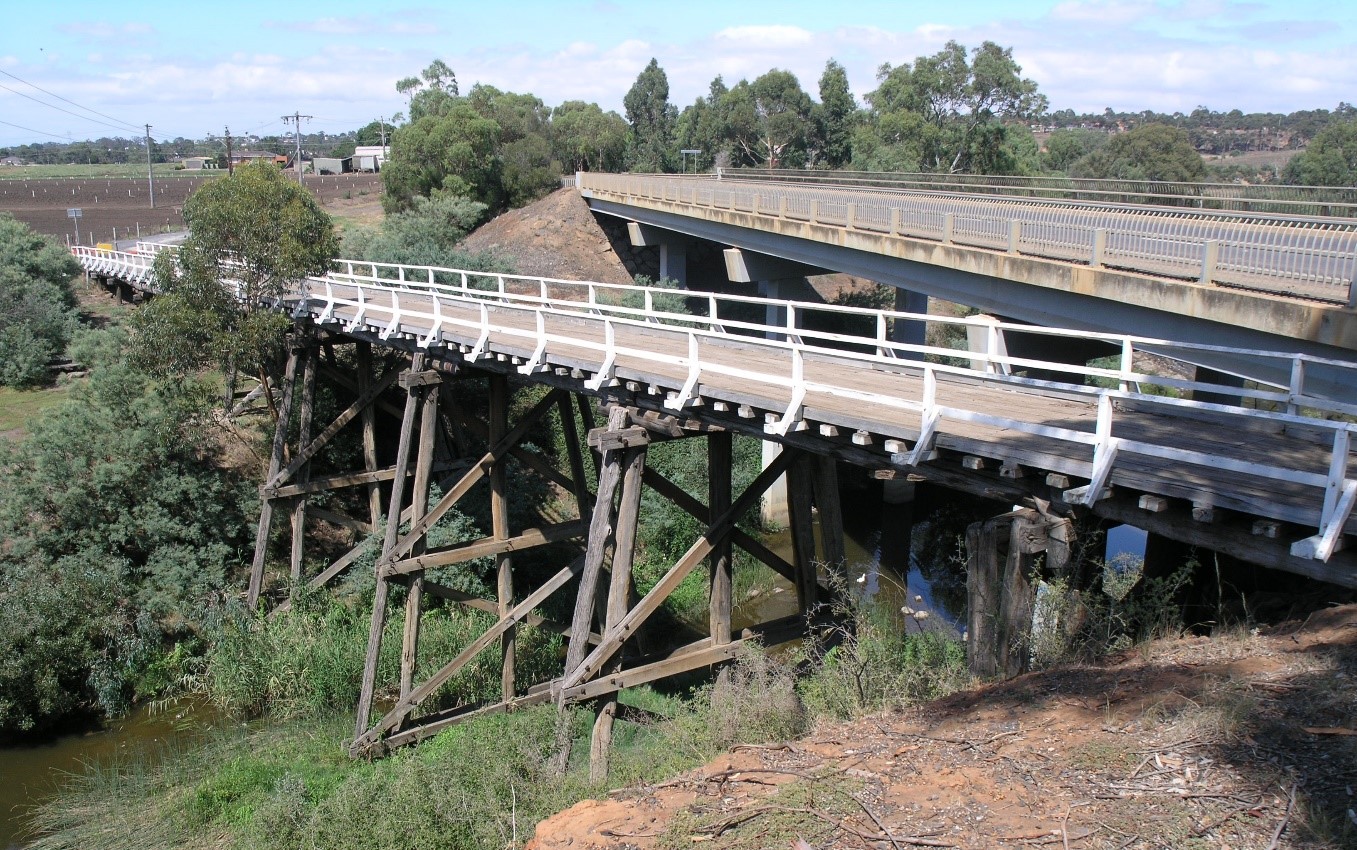On this page:
Victoria and floods
Australia has a long history of flooding. Since 2000, Victoria has seen three major flood incidents, in 2011, 2016 and 2022. Floods pose a significant risk to Victorian communities and to heritage.
Future flood risk is changing as cities expand out and with climate change, we are seeing more frequent high intensity rainfall events. To add to it, water storage capacity is also under increased pressure due to climate change.
Heritage Victoria visited and assessed many heritage places following the 2022 Victorian floods. A lot of the information provided here has been informed by learnings from these assessments.
On this page you will find recommendations around preparing your heritage property and assisting recovery in the event of a flood.
Types of floods
Several different types of flooding are possible, some of which are:
Riverine floods
The most common form of flooding in Australia. The two main contributors to riverine flooding are:
- Heavy rainfall
- The land’s capacity to absorb water.
Characteristics:
Land becomes saturated, the excess water flows into river systems and can cause them to exceed their capacity. This causes the water to flow into the low-lying areas adjacent.
Riverine flooding occurs in relatively low-lying areas adjacent to streams and rivers. In the extensive flat inland regions of Australia, floods may spread over thousands of square kilometres and last several weeks, with flood warnings sometimes issued months in advance.
Flash floods (also known as overland flooding)
- Rapid onset of flooding when rain begins (ranging from tens of minutes to a few hours) often with rapid rates of rise in areas of high hazard.
- Flash flooding can overwhelm streams and stormwater drainage.
- Flash flooding can occur almost anywhere there is a relatively short, intense burst of rainfall.
- Is unpredictable in nature.
Duration is often relatively short by comparison to riverine floods.
Coastal floods
- Happens when a low-pressure system or strong onshore winds force sea levels to rise above normal levels, creating a storm surge that can cause flooding in low-lying areas close to tidal waterways and foreshores
High intensity rain events
In Victoria, flood impacts are influenced by rainfall intensity, catchment characteristics, and the vulnerability of ecosystems and urban areas.
To prepare for potential changes, it's crucial to understand current and future rainfall patterns. For instance, civil engineers might need to adapt stormwater infrastructure for heavier or more frequent rainfalls, and transportation planners should be ready for disruptions caused by heavy rains.
Experts are predicting increased flood risks in cities and urban areas due to heavier rainfall, while rural areas and larger river basins are influenced by multi-day rainfall events and soil moisture conditions.
Efforts to address vulnerabilities and improve resilience measures in preparation for future storm and flood events will help ensure better outcomes for our heritage places into the future.
Types of heritage vulnerable to flooding
Historic heritage buildings, places, objects and sites (‘heritage assets’) will be affected by storm and flood water in different ways.
Medium to long term impacts of flood water inundation to historic heritage assets can include:
Heritage buildings
- Collapse or movement of building and contents due to force of waterflow.
- Secondary water flow can lead to erosion of building foundations and undermining structures.
- Flooding can detach loosely connected building elements (e.g., verandas, fuel tanks, water tanks and free-standing items or structures). These elements can cause damage if they impact other structures along the floodway.
- Damage to water and sewerage systems, both external and internal.
- Ongoing rising damp issues in masonry structures during and a long time after the waters recede.
- Full or partial destruction of municipal services (e.g., water, gas and electricity).
Other heritage sites (e.g. bridges, landscapes and archaeological sites):
- Fast water flows during flooding, flash flooding or secondary water flow, impact of debris in the flood stream, or destabilisation caused by erosion of footings and bridge abutments.
- Loss or destruction of historic landscape elements and defining features of historic landscapes (e.g., trees, roads, walls, park systems).
- Loss or destruction of industrial heritage features, such as historical water infrastructure.
- Deposition of flood materials (e.g., silt, vegetation, large trees and other materials) to a heritage property.
- Erosion around historic mining settlements, mine shafts, stopes and historic sawmilling areas.
- Damage to heritage dams/stone walls.
- Historic cemeteries may suffer water damage exposing human remains.
- Structural damage to historic bridges (washing away of sections or entire bridge or debris impact damage to the structure).
Heritage collections:
- Water and humidity can cause damage to heritage objects inside heritage buildings (e.g., mould growth, warping and cracking timber).
- Flood water may also contain chemicals, pollutants, micro-organisms and mud, which can contribute to the deterioration of objects in collections.
Case study: Arundel Road Trestle Bridge (2022)
One example of the impact a flood can have on a heritage asset is when the 2022 floods resulted in the almost complete destruction of the historic timber Arundel Road Trestle Bridge (VHR H1952).
A shipping container carried down the Maribyrnong River in flood waters crashed into the bridge, ripping the structure apart.
Timber bridges are a particularly vulnerable place type during flood events and therefore a technical note to address maintenance, preparedness and recovery of these structures has been developed to guide land managers.

- Flood impacted Arundel Road Trestle Bridge

- Arundel Road Trestle Bridge before the flood
Page last updated: 10/07/24

